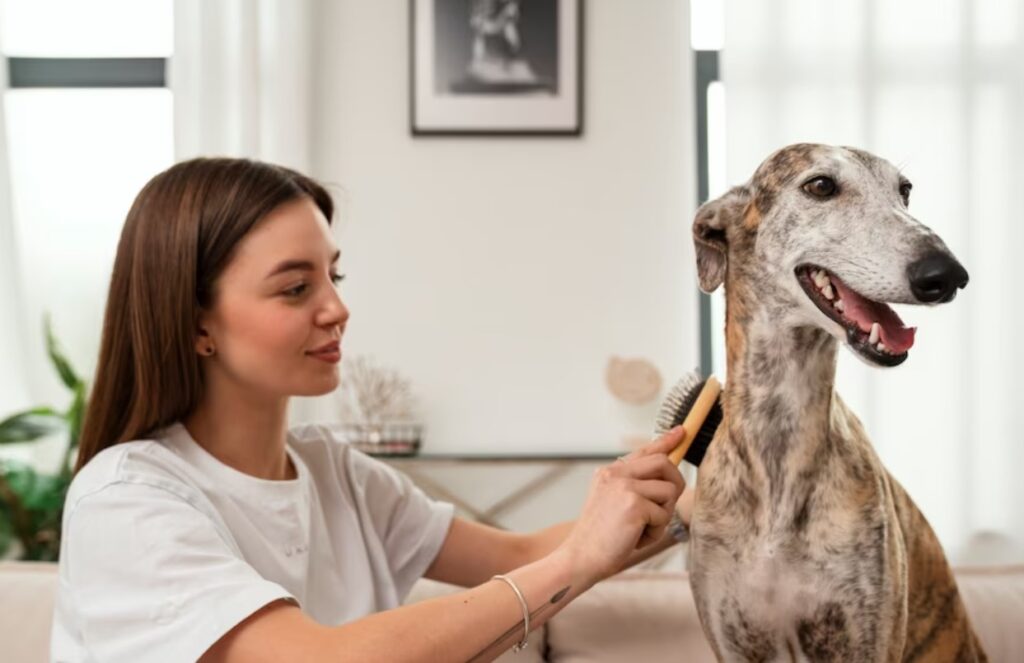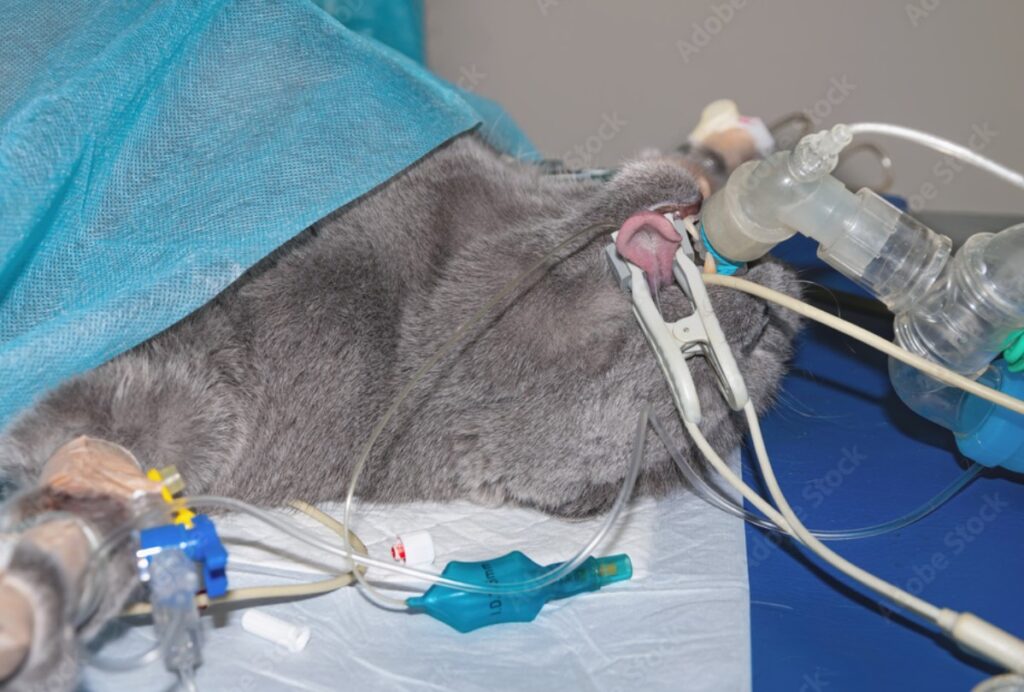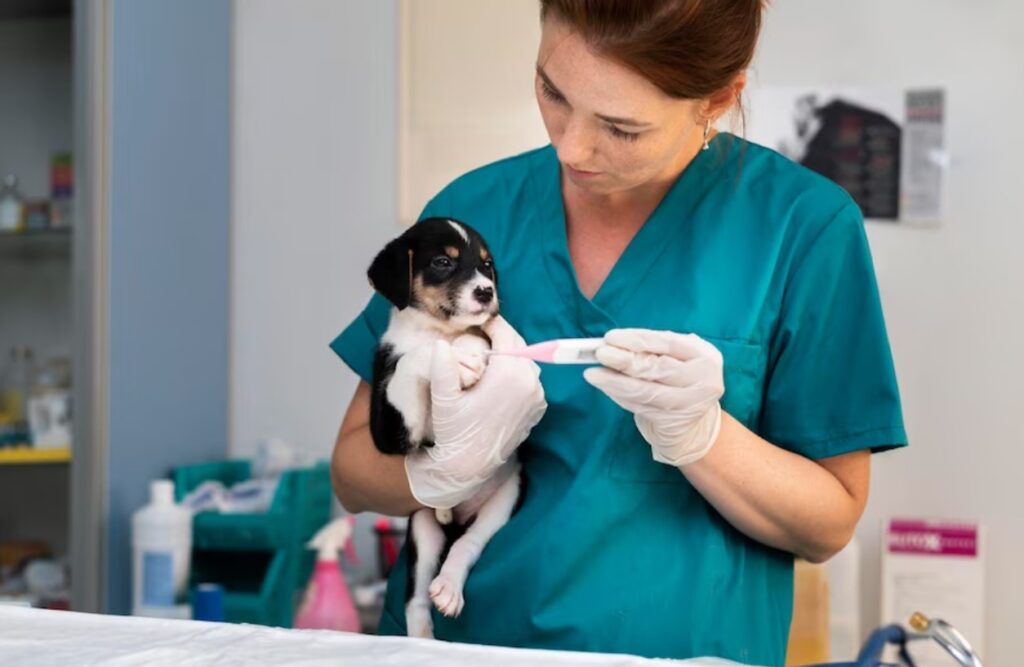As a pet owner, you want to ensure your beloved four-legged family member is always safe and healthy. That’s why pet first aid is so important – it can help you protect your pet and even save its life in an emergency. In this article, “Fur-ever Ready: Essential Pet First Aid Tips”, we will show you the essentials of pet first aid, so you can be prepared for any situation.
We will begin by discussing the importance of pet first aid and why it is essential for every pet owner to have at least a basic understanding of it. Then, we’ll provide a step-by-step guide to performing pet first aid, including the equipment and supplies you need to have on hand. We will also cover how to recognize and respond to common pet emergencies, as well as how to identify and treat common pet injuries and illnesses. By the end of this article, you will have all the knowledge you need to be a pet first aid expert and be “Fur-ever Ready”!

Common Pet Emergencies and How to Respond
Poisoning:
Poisoning is a common medical emergency among pet owners. The symptoms of poisoning can range from vomiting and diarrhea to seizures and difficulty breathing. If you believe your pet has been poisoned, the first step is to call your veterinarian and ask for advice. They may suggest bringing your pet in for an examination or they may be able to provide specific instructions on how to treat the poisoning. It is important to have all information, including the type of poison your pet may have ingested, available when calling the vet, as this can help with the diagnosis and treatment plan.
Seizures:
Seizures are a common medical emergency for pets and can be a sign of a more serious underlying condition. If your pet is having a seizure, it is important to remain calm and to try to prevent them from injuring themselves. During the seizure, try to keep your pet away from furniture and other objects that may cause them harm. You should also carefully observe the duration and frequency of the seizure, as this may help your vet with the diagnosis.
Burns:
Burns can be caused by heat, chemicals, and electrical shocks, and can cause serious injury to your pet. If the burn is superficial, you can apply a cool compress to the area and monitor your pet for signs of infection. However, if the burn is more severe, you should seek immediate medical attention.
Bleeding:
Bleeding can be caused by an injury or an underlying medical condition. It is important to assess the severity of the bleeding and take necessary action. If the bleeding is minor, applying pressure to the wound can help to stop it. If it is more serious, you should contact your veterinarian or an emergency animal hospital immediately.
Heat Stroke:
Heart stroke is a serious condition that can occur in pets if they are exposed to extremely high temperatures. Signs of heat stroke include excessive panting, difficulty breathing, and lethargy. If your pet is experiencing any of these symptoms, you should move them to a cool area, apply cool water to the body, and contact your vet immediately.
Choking:
Choking can be a serious medical emergency that requires immediate first aid and medical attention. If your pet is choking, the first step is to try to identify the object that is blocking their airway. If the object is visible, you can try to gently remove it. If the object is not visible, you should contact your vet or an emergency animal hospital immediately.

How to Assemble a Pet First Aid Kit
Essential items to Include:
A pet first aid kit should include a variety of medical items. These include bandages, gauze, tape, scissors, antibiotic ointment, antiseptic wipes, latex gloves, tweezers, and cotton swabs. It may also be helpful to include a thermometer, a muzzle, and a muzzle-breaking tool. Additionally, any medications prescribed by your veterinarian should be included in the kit.
Where to Store the Kit?
The pet first aid kit should be stored in a cool, dry place, such as a pantry or closet. Make sure to label the kit clearly, so it is easily identifiable in an emergency. It is also important to make sure that the kit is kept out of reach of pets and children.
How to Maintain the Kit?
It is important to regularly check the contents of the pet first aid kit, to make sure that all items are in good condition and not expired. When using items from the kit, make sure to replace them as soon as possible. Additionally, make sure to check any medications for expiration dates and replace as needed.
How to Assess Your Pet’s Vital Signs
Explanation of what vital signs are
Vital signs are the measurements of essential body functions that indicate a pet’s general health and well-being. These signs include heart rate, respiratory rate, temperature, and more. They are essential for providing insight into a pet’s overall health and can help alert owners of any potential issues. By assessing your pet’s vital signs regularly, you can help ensure that your pet is happy and healthy.

How to measure your pet’s heart rate, respiratory rate, and temperature?
Measuring your pet’s heart rate, respiratory rate, and temperature can help you identify any potential issues. For a pet’s heart rate, you can manually count the number of beats per minute, or use a pulse oximeter. You can measure respiratory rate by counting the number of breaths per minute. The best way to measure temperature is with a digital thermometer, which should be inserted rectally for the most accurate reading.
What to do if vital signs are abnormal?
If you notice that any of your pet’s vital signs are abnormal, it is important to contact your veterinarian immediately. They can help diagnose and treat any underlying issues that may be causing the abnormal signs. It is also important to keep track of your pet’s vital signs over time, so that you can monitor any changes that may occur.
How to Administer First Aid for Injuries
Broken Bones:
In the case of broken bones, the primary goal is to minimize pain and prevent further injury. The first step is to stop any bleeding. If the bone is visible through the skin, cover it with a sterile dressing to avoid infection. If swelling is present, elevate the affected area and apply ice to reduce swelling and pain. In addition, it is important to immobilize the affected area as much as possible to reduce the risk of further injury. It is essential to seek medical attention as soon as possible.
Cuts and Wounds:
When dealing with cuts and wounds, the first step is to stop any bleeding. Apply direct pressure on the wound with a sterile dressing or cloth. Clean the wound with mild soap and water, and then apply a topical antibiotic ointment. If the wound is deep, it may require stitches. In this case, seek medical attention as soon as possible.
Eye Injuries:
Eye injuries can range from minor scratches to more serious damage. In any case, it is important to seek medical attention as soon as possible. If a foreign object, such as dirt or glass, is present in the eye, do not attempt to remove it, as this can cause further damage. Instead, cover the eye with a sterile dressing or cloth and seek medical attention.
Bee Stings and Insect Bites:
In the case of bee stings and insect bites, the goal is to reduce pain and reduce the risk of infection. The first step is to remove the stinger or insect if still present. If possible, avoid scratching the affected area, as this can increase the risk of infection. Apply a cold compress to reduce swelling and pain. If an allergic reaction is present, seek medical attention as soon as possible.
How to Handle Emergency Situations
When to Call a Veterinarian:
When your pet is injured or is displaying signs of severe illness, it is important to contact your veterinarian as soon as possible. Symptoms such as difficulty breathing, excessive bleeding, or disorientation are signs that require immediate medical attention. Additionally, if your pet has ingested something potentially toxic, contact your veterinarian right away.

How to Transport an Injured Pet:
If your pet is injured, it is important to safely transport them to your veterinarian. If the injury is severe, consider having someone assist you in safely carrying your pet or by using a stretcher. If it is possible, place your pet in a box or carrier for protection, and cover with a towel or blanket for comfort. Make sure to secure the animal if you are using a car for transport.
What to Do While Waiting for Medical Attention:
While waiting for medical attention, it is important to be as calm and collected as possible. If your pet is conscious, speak to them in a soothing manner and give them a familiar object for comfort. If the pet is bleeding, use any clean cloth or bandage available to apply pressure to the wound. Do not attempt to give your pet any medications unless instructed to do so by a veterinarian.
Preventing Pet Emergencies
Preventing Pet Emergencies
Pet emergencies can be avoided if you take the right precautions. To ensure your pet is safe and healthy, follow these tips:
Pet-Proofing Your Home: Pet-proofing your home can help prevent accidents and keep your pet safe. Remove any potential hazards like cords, wires, and other items your pet may chew. Secure any potentially dangerous items, such as cleaning supplies, away from your pet. Make sure any medications and other hazardous materials are out of reach. Check all windows and doors to make sure your pet can’t escape.
Outdoor Activities: When going on walks with your pet, make sure your pet is wearing proper identification and remember to use a leash. Avoid walking your pet in areas that have heavy traffic or other dangers. If your pet is a runner, make sure you have a secure area for them to play and consider using a harness or other type of restraint.
Regular Check-Ups and Vaccinations: Regular check-ups and vaccinations are essential for your pet’s health. Make sure to schedule regular visits to the vet to check for any potential problems. Vaccinations play an important role in preventing serious illnesses and should be administered according to the recommended schedule.
Conclusion
As we’ve seen, pet first aid is an essential part of being a responsible pet owner. Being prepared for any potential pet emergencies is important, and being aware of the signs and symptoms of common pet health issues can help you know when to act. With the right supplies and knowledge, you can provide basic first aid for your pet in the event of an emergency. By taking the time to learn about pet first aid and keeping a pet first aid kit on hand, you can ensure that you’ll always be fur-ever ready to help your pet in their time of need.
FAQ – Essential Pet First Aid Tips
1. What are the essential pet first aid tips?
Answer: Essential pet first aid tips include: checking for signs of pain, checking vital signs, providing oxygen, performing CPR, controlling bleeding, removing foreign objects, treating shock, preventing and treating insect bites, and bandaging wounds.
2. What should I do if my pet is injured?
Answer: If your pet is injured, immediately move them to a safe place and assess their vital signs. If they are unconscious, provide oxygen and perform CPR. If they are conscious, check for pain, control bleeding, and remove any foreign objects.
3. How can I check my pet’s vital signs?
Answer: To check your pet’s vital signs, take their temperature with a pet thermometer, listen to their heart and lungs with a stethoscope, check their pulse at their hind leg, and check their gums for color and moisture.
4. What is the best way to provide oxygen to my pet?
Answer: The best way to provide oxygen to your pet is to use an oxygen mask or oxygen tent. Place the mask over your pet’s nose and mouth and make sure it fits snugly. If your pet is too large for a mask, you can use an oxygen tent.
5. How can I perform CPR on my pet?
Answer: To perform CPR on your pet, lay them on their right side, open their mouth and clear their airway, cover their nose and mouth with your mouth, and give two quick breaths. Then, perform chest compressions by pressing down on their chest with both hands, two times per second.
6. What should I do if my pet is bleeding?
Answer: If your pet is bleeding, place a clean cloth or gauze over the wound and apply pressure. If the bleeding does not stop, cover the wound with a sterile bandage and seek veterinary care as soon as possible.
7. What is the best way to remove a foreign object from my pet?
Answer: The best way to remove a foreign object from your pet is to use tweezers or a pair of pliers. Wear medical gloves to protect yourself and your pet, and be very gentle. If the object is too large or deep to be removed, seek veterinary care as soon as possible.
8. What should I do if my pet is in shock?
Answer: If your pet is in shock, lay them on their right side and keep them warm with a blanket. Do not give them food or water, and seek veterinary care as soon as possible.
9. How can I prevent and treat insect bites on my pet?
Answer: To prevent and treat insect bites on your pet, keep them away from areas where insects are likely to be present, use insect repellent, and regularly check your pet for signs of bites. If your pet is bitten, immediately apply a cold compress to the area and seek veterinary care if necessary.
10. How do I properly bandage a wound on my pet?
Answer: To properly bandage a wound on your pet, clean the wound with warm water and an antiseptic solution, apply an antibiotic ointment or cream, and cover the wound with a sterile bandage. Make sure the bandage is not too tight, and check the wound regularly for signs of infection.
